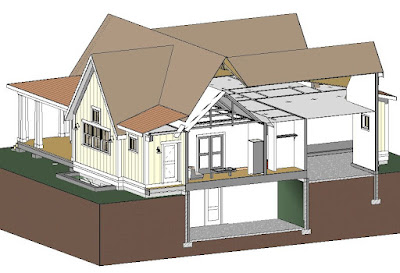I posted an article the other day on gaining inspiration from old houses. Below is another great example - a bungalow that I stumbled upon near Forestville, California. It is so simple yet so well done. Why aren't builders and designers creating more homes like this anymore? Has the idea of doing a modest, simple and well detailed home escaped them? There must be a niche for this kind of house plan, but perhaps it's a lost art.
 So here is the brilliant idea:
So here is the brilliant idea:- keep the overall form and roof line very simple - this costs less to build
- use nice deep overhangs - this protects the walls, windows and doors from the elements
- create a good composition of windows - here picture windows are combined with double hungs and centered between the porch columns and the wall surfaces
- use minimal ornamentation - the window grid patterns and the exposed rafter tails are pretty much the extent of it here
- create a focal point - the simple shed dormer with louvers and the stair that is "captured" with side walls helps to create a center line and create focus on the entry
- give the house a base - the white clapboard siding provides a platform for the house to sit on and it contrasts nicely with the red shingle siding.





























